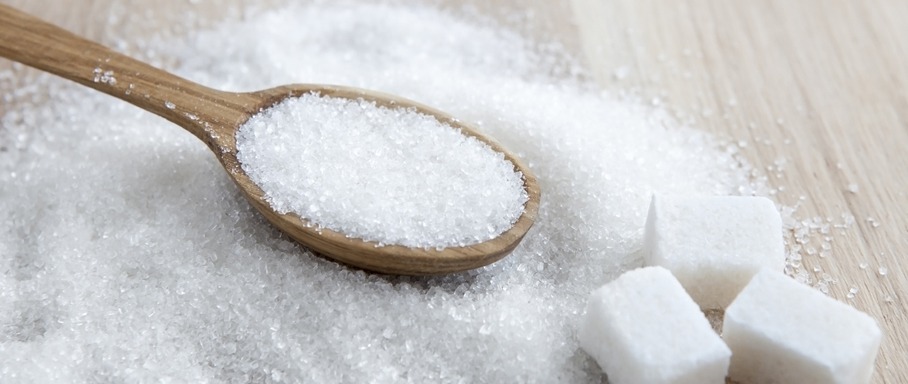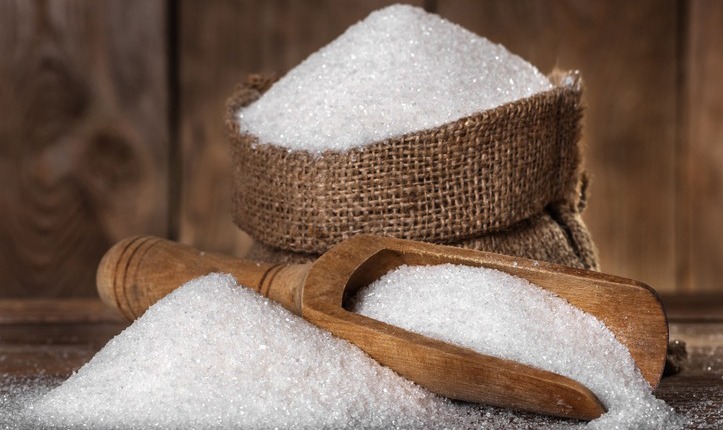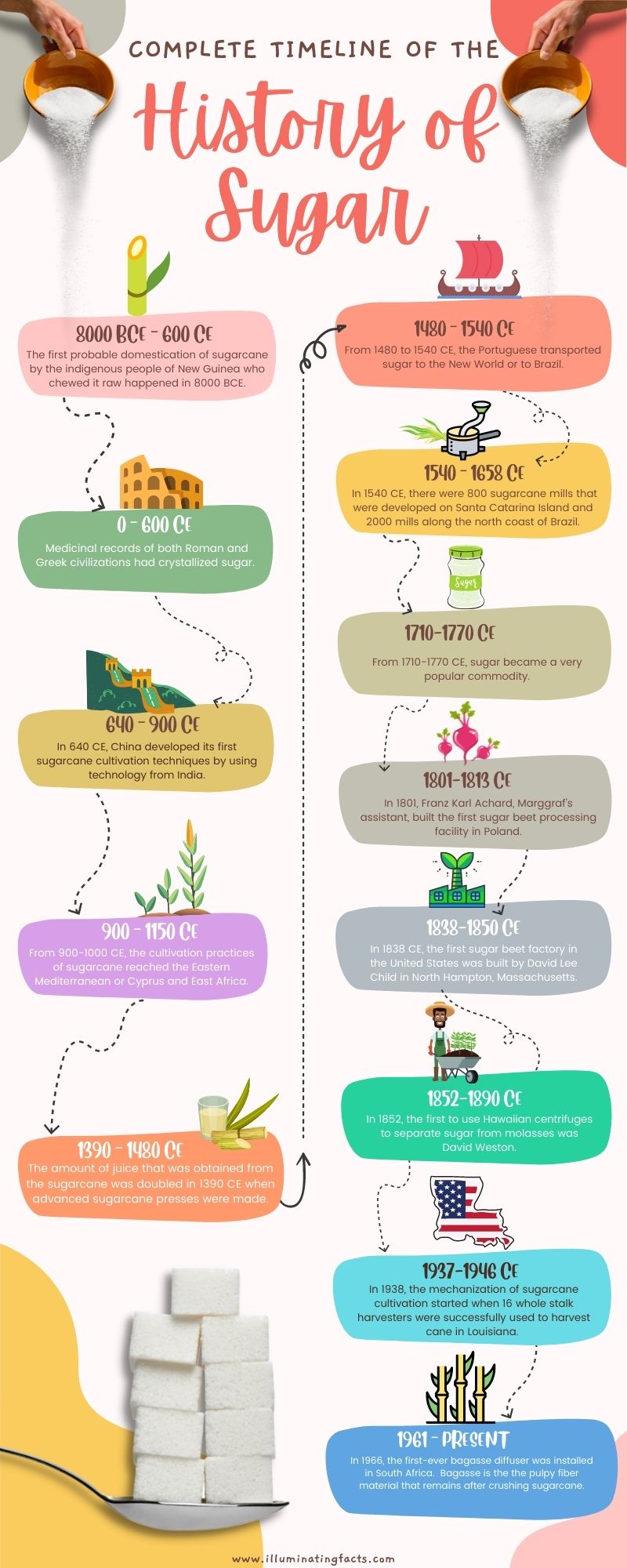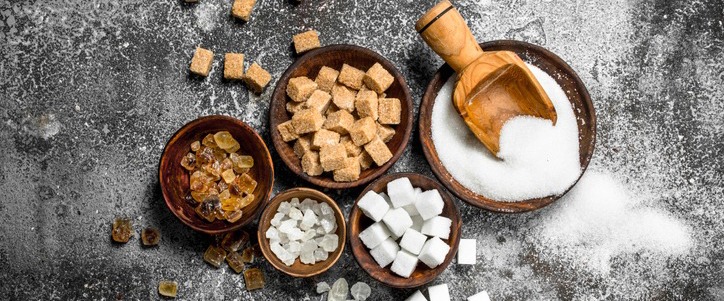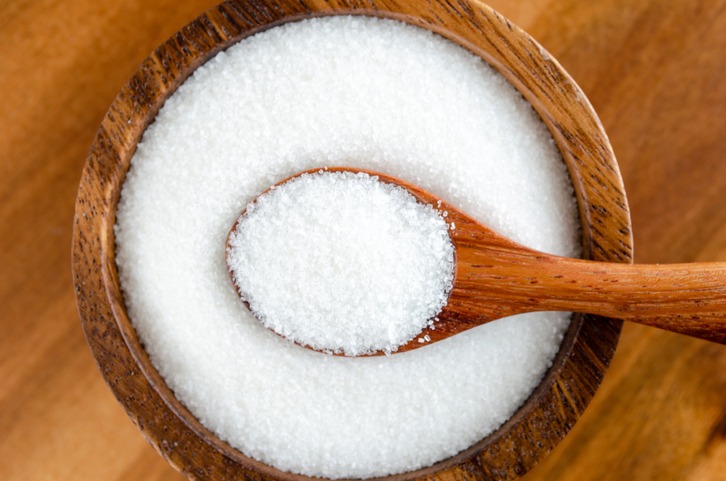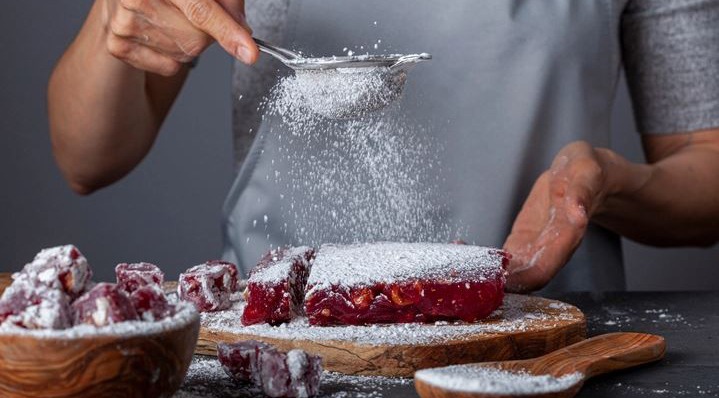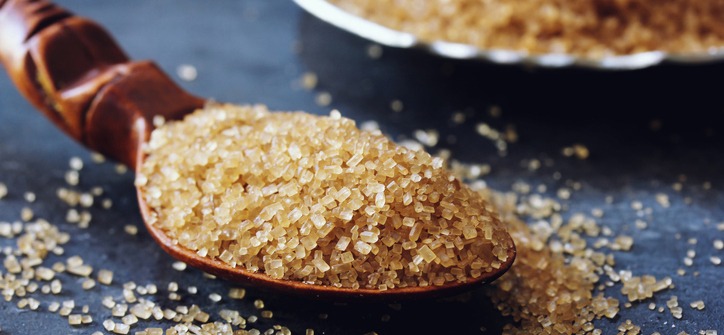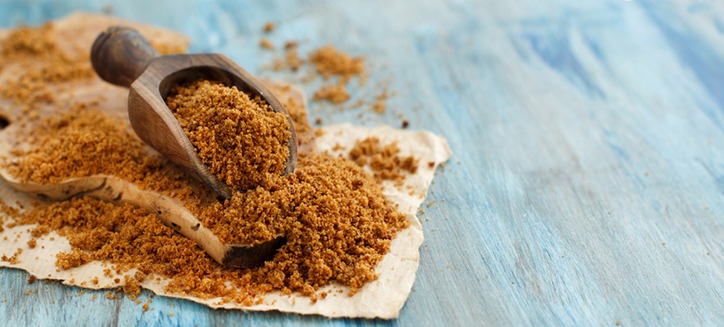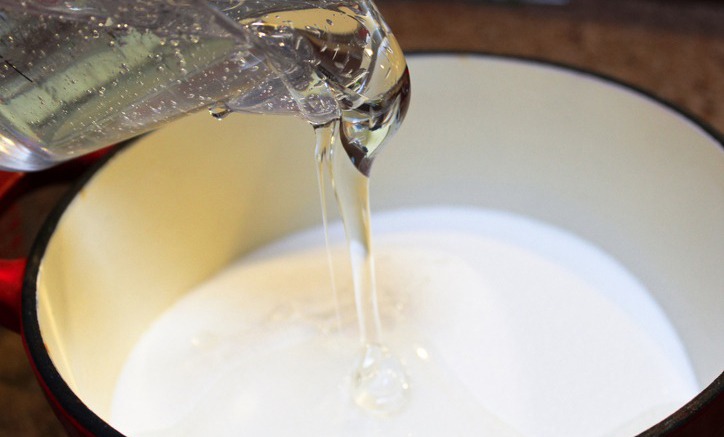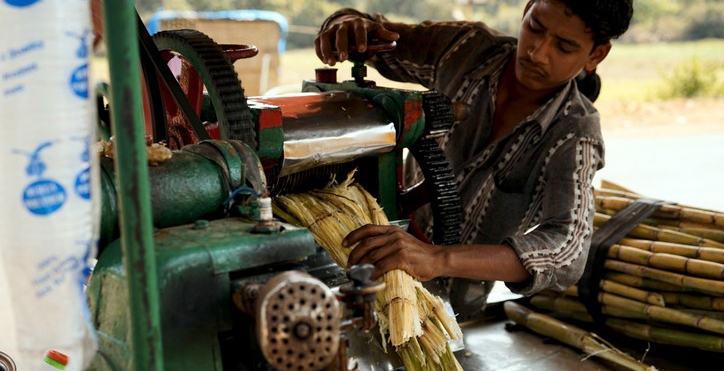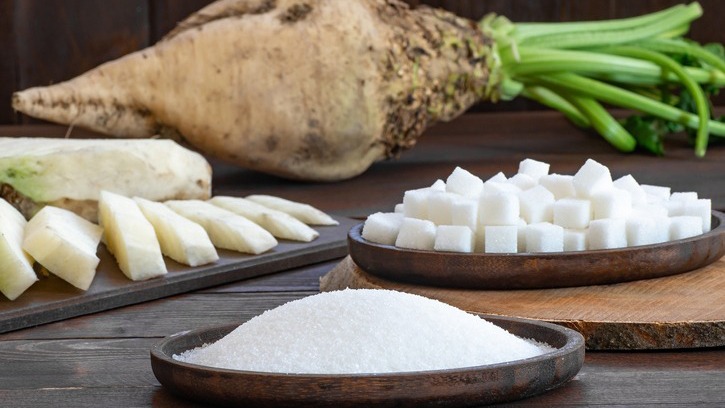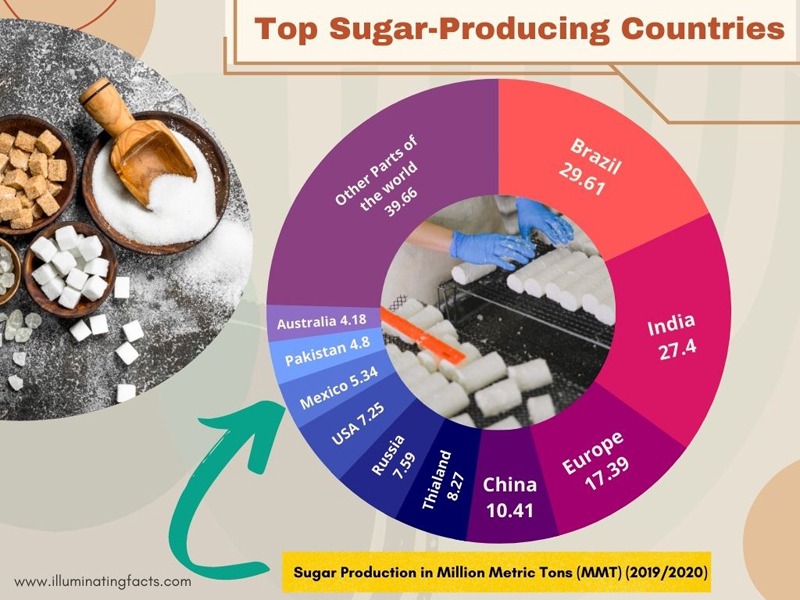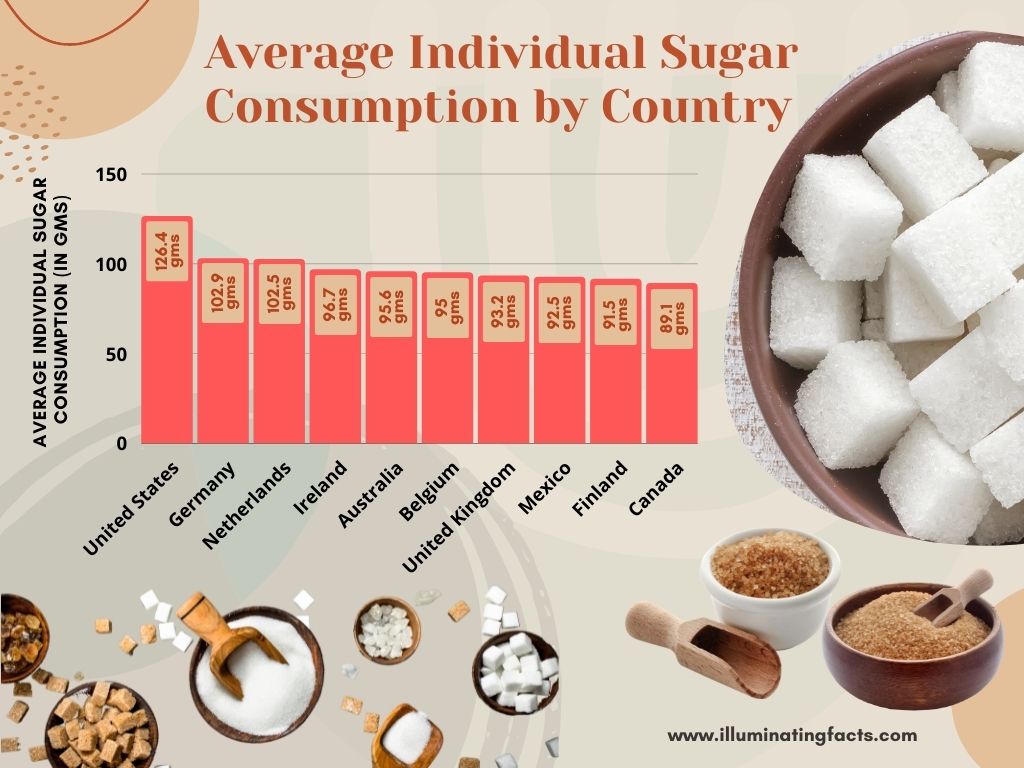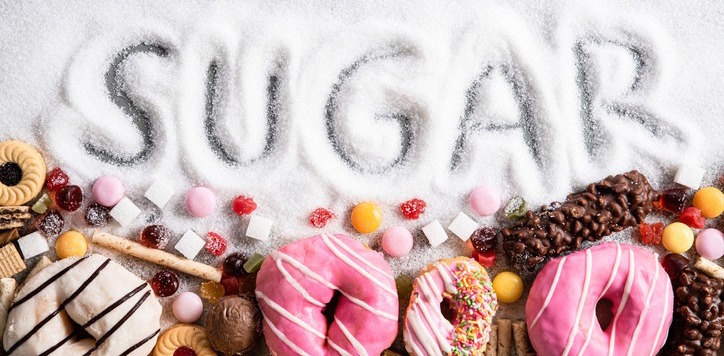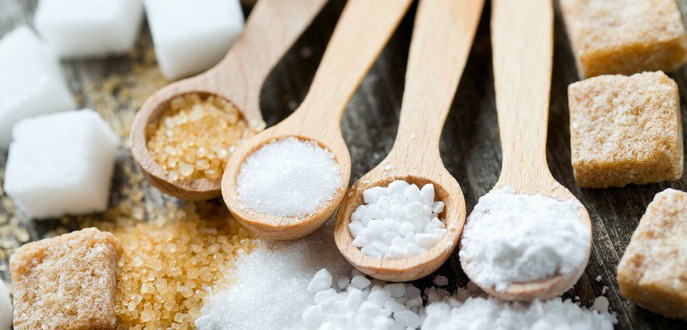Background
Whenever people cook, bake, make drinks, or prepare food, one of the most used condiments is sugar. When you check the ingredients on the packaging of the snacks or drinks you buy, it’s likely that you will find sugar. In fact, there was a time in history when sugar became so valuable that people locked it up in a safe. That’s quite interesting to learn since sugar today can be bought easily at any local store near you.
This post will cover all things about sugar. These include its history, different types, uses, and how it’s made. In addition, there will be visual representations and numerical data to show the global production and consumption of sugar. Furthermore, the impact of sugar on health will also be explained, along with many interesting facts about sugar.
History of Sugar
The physiology of humans evolved on a diet that involved very little sugar and almost no refined carbohydrates. It might be true that sugar entered into people’s diets by accident. It is possible that sugarcane was primarily a fodder crop that was used to fatten pigs, but humans may have chewed on the stalks from time to time.[ 1 ]
It is believed that sugarcane was first used by man in Polynesia before it spread to India. The Emperor Darius of what was then Persia back in 510 BC invaded India, where he discovered the “reed which gives honey without bees.” The secret of sugarcane, like many of men’s discoveries, was kept a closely guarded secret while the finished product was distributed for a big profit.
However, in the 7th Century AD, the secret was broken when the Arab people invaded Persia in 642 AD. There, they discovered sugarcane being grown, and they learned how sugar was made. As their development continued, they established sugar production in the other lands they conquered, which included Spain and North Africa.
Western Europeans only discovered sugar as a result of their Crusades in the 11th Century AD. The crusaders who returned home talked about the new spice they discovered and how it tasted so good. It was in 1099 when the first use of sugar was recorded in England. The following centuries saw a major development of Western European trade with the East, which included the importation of sugar. In 1319 AD, it was recorded that sugar was available in London at “two shillings a pound.” This equals US$100 per kilo at the present time, which makes sugar very much a luxury back then.[ 2 ]
When the 15th Century AD came, European sugar was refined in Venice. Back then, even though the quantities were small, it was challenging to transport sugar as a food-grade product. In the same year, Columbus sailed to the Americas or the New World, and in 1493, it was recorded that he took sugarcane plants to grow in the Caribbean. The climate there was perfect for the growth of sugarcane that the industry was established quickly.
There was a large need for labor to cultivate the massive sugar plantations in the Caribbean and in Brazil. This need was met through a transatlantic slave trade, which led to around 12,570,000 people being shipped from Africa to the Americas between 1501 and 1867. On each voyage, mortality rates could reach as high as 25%, and around 1 million and 2 million dead must have been thrown overboard.[1]
In the 1600s, tea, chocolate, and coffee made their way to Europe. The arrival of these increased sugar consumption, which made it even more popular compared to alcohol. Its increasing demand meant greater reliance on slavery.[3]
When 1750 came, there were around 120 sugar refineries in Britain, with a total of 30,000 tons of sugar being produced each year. During these times, sugar was still very expensive, and vast profits were made. That’s why people back then referred to sugar as “white gold.” With that, the government found out about the large profits that were made from sugar, and they started to tax it highly. For example, in Britain back in 1781, the sugar tax was £326,000, which grew to £3,000,000 in 1815. The high sugar tax remained until 1874 when the British government under Prime Minister Gladstone removed the tax and brought sugar prices with the income of ordinary citizens.[2]
In 1747, the sugar beet was identified as a source of sugar by German chemist Andreas Marggraf.[3] However, the vested interests in the sugarcane plantations ensured that it stayed as no more than a curiosity. It was a situation that prevailed until the Napoleonic wars at the beginning of the 19th century, during the time Britain blocked sugar imports to continental Europe.
By 1880, sugar beet had replaced sugarcane as the main source of sugar in continental Europe. But the vested interests delayed the introduction of the sugar beet to England until World War I when the sugar imports of Britain were threatened.[2] In 1864, the largest and most technologically advanced sugar refinery in the world opened in Williamsburg on Long Island. The production of American sugar increased with improvements in manufacturing, and it also drove down the prices.[3]
At the present time, we can say that sugar’s grip is stronger than comparable scourges like alcohol and tobacco. In addition to being ubiquitous, it is also possibly responsible for about 20% of the caloric content of modern diets and as well as central to the economy of the world and its cultural heritage.[1]
Complete Timeline of the History of Sugar
Here is a complete timeline of the history of sugar, based on sugar.org.
- 8000 BCE – 600 CE: The first probable domestication of sugarcane by the indigenous people of New Guinea who chewed it raw happened in 8000 BCE. After that, the cultivation practices of sugarcane spread throughout Southeast Asia, India, and China via crusaders.
- 0 – 600 CE: Medicinal records of both Roman and Greek civilizations had crystallized sugar. It was then used as a treatment for indigestion and stomach ailments. In 350 CE, sugar was crystallized in India for the first time during the Gupta dynasty. In 600 CE, the cultivation and processing methods of sugar reached Persia. The techniques were spread into the Mediterranean by Persian expansion throughout Mesopotamia.
- 640 – 900 CE: In 640 CE, China developed its first sugarcane cultivation techniques by using technology from India. From 800 to 900 CE, sugarcane was grown broadly in Southern Europe, following the Persian conquest of the region. Sugarcane was mostly grown in Spain and Sicily.
- 900 – 1150 CE: From 900-1000 CE, the cultivation practices of sugarcane reached the Eastern Mediterranean or Cyprus and East Africa. Crusaders returned to Europe from the Holy Land with prizes of sugar which they called sweet salt, from 1096 to 1099 CE. The Lebanese land estates around Tyre were made to grow sugarcane and export it to Europe from 1101 to 1150 CE.
- 1390 – 1480 CE: The amount of juice that was obtained from the sugarcane doubled in 1390 CE when advanced sugarcane presses were made. From 1455 to 1480 CE, sugarcane was cultivated for large-scale refinement for the first time in Madeira.
- 1480 – 1540 CE: From 1480 to 1540 CE, the Portuguese transported sugar to the New World or to Brazil. In 1501, Hispaniola, which is now Haiti, or the Dominican Republic, had its first sugar harvest.
- 1540 – 1658 CE: In 1540 CE, there were 800 sugarcane mills that were developed on Santa Catarina Island and 2000 mills along the north coast of Brazil. In 1550 CE, there were around 3000 sugar mills built in South America and the Caribbean. When 1658 CE came, sugarcane was introduced to South America and the Caribbean (the Virgin Islands and Barbados) by Dutch colonists.
- 1710-1770 CE: From 1710-1770 CE, sugar became a very popular commodity. In fact, it represented 20% of all European imports. By the end of the century, the British and French colonies in the West Indies produced 80% of the sugar. In 1747 CE, Andreas Sigismund Marggraf, a German chemist, identified sugar in beetroots. In 1751, sugar was brought to Louisiana, which was the final sugar colony. In 1768 CE, the first steam-powered sugar mill was built in Jamaica.
- 1801-1813 CE: In 1801, Franz Karl Achard, Marggraf’s assistant, built the first sugar beet processing facility in Poland. In 1813, a more fuel-efficient method of refining sugar was invented by Edward Charles Howard, which boiled the cane juice in a closed kettle heated by steam and was held under a partial vacuum. This invention was named Howard’s vacuum pan.
- 1838-1850 CE: In 1838 CE, the first sugar beet factory in the United States was built by David Lee Child in North Hampton, Massachusetts. In 1850 CE, Cuba became the richest land in the Caribbean as it was the only major island that was free of mountainous terrain, making it ideal for sugarcane production.
- 1852-1890 CE: In 1852, the first to use Hawaiian centrifuges to separate sugar from molasses was David Weston. In 1870 CE, the first successful commercial sugar beet production in the United States started in central California. By 1890, sugar beet factories were already established in Alvarado and Watsonville.
- 1937-1946 CE: In 1937, the first industrial-scale conversion of bagasse into paper was developed in Peru by W.R. Grace Company. Bagasse is the fibrous material that remains after extracting the juice from sugarcane, and it is usually burned as fuel in the sugarcane mill. In 1938, the mechanization of sugarcane cultivation started when 16 whole stalk harvesters were successfully used to harvest cane in Louisiana. By 1946, due to the labor shortages during wartime, 442 whole stalk machines cut 63% of the sugarcane crop in Louisiana.
- 1961 – Present: In 1951, colorless sterile invert sugar was patented by the Sugar Research Foundation. In 1966, the first-ever bagasse diffuser was installed in South Africa, and it was based on the existing technology of Egyptian diffusers. On December 12, 2016, the last sugar harvest in Maui happened. After that, Hawaii no longer produces sugar. At the present time, sugarcane and sugar beet yields continue to improve due to modern varieties of the plants and as well as the advancement in agricultural technology.[4]
Different Types of Sugar
Sugar is a kind of carbohydrate that has hydrogen, carbon, and oxygen molecules. When carbohydrates are eaten, they are digested and broken down into sugar or glucose. This provides energy for the cells throughout the human body, including the brain and central nervous system. There are four most common forms of simple sugars which are glucose, fructose, sucrose, and lactose. But these can be categorized further into natural sources of sugar and added forms.[5]
From white sugar to cane sugar to brown sugar, here are the different types of sugar that you need to learn about:
Granulated Sugar
This is probably the most popular type of sugar out there. It is a highly refined type of sugar, and it is also multi-purpose. It is sometimes referred to as refined, table, or white sugar. When people talk about sugar, this is often what they are referring to. It is made from sugarcane and sugar beets. It is commonly used in cooking and baking.[6]
Confectioners’ Sugar
This is also known as powdered sugar. It is a type of granulated sugar that is ground to a smooth powder and then sifted. It is often mixed with a bit of cornstarch to avoid caking. It is commonly used in decorating baked goods. It can be sprinkled on cakes or used to make the icing. It is also usually used in whipped cream due to its stabilizing properties.[7]
Brown Sugar
This type of sugar is a less-refined version of regular cane sugar. This means that it contains a certain amount of molasses and caramel, which give it a damp consistency. Brown sugar has a low enough pH, making it a bit acidic. Therefore, it will activate baking soda when they are combined. It also contributes brown color to foods and drinks. Light and dark brown sugars are distinguished based on how much molasses they contain.[8]
Cane Sugar
Granulated sugar comes from sugar beets or sugarcane. However, cane sugar is produced solely from sugarcane, and it is minimally processed. This type of sugar also has larger grains, darker color, and it also costs more. But it is used the same way you would use granulated sugar.[6]
Sanding Sugar
This type of sugar, whether the granules are large or small, reflects light making them seem like they are sparkling. It is mostly used in decorating products that are already baked. Most of the time, it is colored and sprinkled onto sugar cookies. [7] It is also sometimes called decorator’s sugar, pearl sugar, and sugar nibs.
Muscovado Sugar
This type of sugar is also called Barbados sugar. It is a variety of unrefined cane sugar wherein the molasses is not removed. Muscovado has dark and light varieties and has a sticky, wet, sandy texture. It also has a rich, complex flavor. It can be used as a substitute for brown sugar, but note that it has a stronger flavor. It is best used when making sauces, marinades, and other savory dishes.[6]
Liquid Sugar
Liquid sugar is also called simple syrup. It has a 1:1 ratio of white, granulated sugar, and water. It does not crystallize, and it melts into liquids uniformly. It is commonly used to sweeten drinks like cocktails, shakes, tea, and coffee.[7]
What Are the Uses of Sugar?
Most people see sugar simply as a sweetener. But did you know that it is not just something that sweetens our foods and drinks? Sugar is an essential ingredient in both the food we cook or prepare at home and the manufactured foods that we buy from supermarkets. It is something that helps many foods to be more palatable while improving their flavor and mouthfeel. In addition, they can also help food last longer. To learn more, here are the different uses of sugar:
Preservative
Sugar can act as a humectant sugar, which maintains and stabilizes the water content in foods. This helps in preventing or slowing down the growth of bacteria, mold, and yeast in foods such as preserves and jams. In addition, it also helps lengthen the shelf life of many manufactured foods.
Bulking Agent
Sugar is also used to add texture to a lot of foods. In addition to affecting the physical characteristics of food, it also adds bulk to many foods, which in turn affects the texture and mouthfeel of many foods. Also, sugar is very important in baking because it helps promote lightness in baked goods. This is because it interacts with leavening agents to make small air cells. It stops cookies and biscuits from cracking. It also provides cakes with their lightness by interacting with egg proteins to even out the whipped foam structure of the batter.
Flavor Enhancer
When you add sugar to foods like fruits and porridge, it helps to balance their flavor and makes them more delicious. In addition to that, sugar can also enhance fruit flavors in foods.
Added Color
When sugar is heated, it breaks down to produce the color and the flavor that characterizes many cooked foods. One example is the brown or caramel color on the top of a Crème Brulé. This is because sugar reacts with proteins as it breaks down in the cooking process. This is referred to as the Maillard reaction.
Added Viscosity
Sugar adds a certain body or thickness in many different drinks and semi-liquid foods like sauces, syrups, and chutneys.
Anticoagulant
When sugar is heated, it delays the coagulation of proteins or the change to a more semi-solid state. This is why it is very useful for products like baked custards and other types of desserts.[9]
How is Sugar Made?
Sugar, or table sugar, is the common name given to the organic compound called sucrose. It can be extracted commercially from different plant sources. The two most popular sources of sugar are sugarcane and sugar beet. As we’ve mentioned earlier, sugar beets were not commonly used for making sugar until the mid-19th century. Sugarcane, on the other hand, has been used to make sugar for thousands of years.[10]
1. Making Sugar from Sugarcane
Sugarcane is a perennial grass that can grow up to 4 meters high. It usually grows in tropical and subtropical regions that have abundant rainfall. Some types of sugarcane grow from seeds, but it is more efficient to grow them by vegetative propagation where its stalks are cut into small pieces and planted in the soil.
The stem is the largest part of the sugarcane plant. A mature sugarcane stem has 11-16% fiber, 12-16% soluble sugar and the remaining parts are mostly water. A hectare of land can produce 6 to 70 tons of sugarcane. Here are the steps on how sugar is made from sugarcane:
- Step 1: After harvesting the sugarcanes, they are crushed to extract their sugar.
- Step 2: The sugarcane juice is then boiled until the water evaporates, leaving behind sugar crystals.
- Step 3: The sugar crystals are centrifuged to remove impurities.
2. Making Sugar from Sugar Beets
Sugar in Europe and Russia is usually made using sugar beets. The sugar beet plant is a perennial plant with a cone-shaped white root, and it grows under the soil. On top of the soil, you can see a pretty rosette of bright green leaves, which work hard to produce sugar and store it in the root.
The roots of sugar beets are made up of 20% soluble sugars, 5% pulp, and water. It usually grows well in temperate climates as it needs 46cm of rain each year. In addition to that, the plant also likes high amounts of humus. Here are the steps to make sugar from sugar beets:
- Step 1: After harvesting the sugar beets, they are washed and cut into small pieces.
- Step 2: After washing and cutting, the sugar beet pieces are then steeped in water to dissolve the sugar and make a sugar solution.
- Step 3: The sugar solution will then be boiled until the water evaporates, leaving behind sugar crystals.
- Step 4: The sugar crystals are centrifuged to remove impurities.
Sugar in Numbers
In this part, we are going to give you numerical data and a visual representation of the production and consumption of sugar in the world.
Top Sugar-Producing Countries in the World
For the 2019/2020 crop year, there were a total of 161.9m tons of sugar produced in the world. Here are the top sugar-producing countries in the world that contributed to that total.
1. Brazil
Brazil is known historically to be the world’s largest producer of sugarcane. In 2019/20, it produced 29.61 Million Metric Tons (MMT) of sugar. Center-South Brazil was responsible for 90% of the country’s production, and that area experiences a lot of rain. It stands out for having ideal weather for growing cane. Brazil also primarily exports raw sugar. In addition to making sugar, sugarcane in Brazil is also used in producing ethanol, which makes Brazil’s sugar market dynamic.
2. India
India is the second top producer of sugar in the world. It now produces about 30m tons of sugar each year. In 2019/20, it produced 27.4m tons of sugar. The massive production of sugar in India makes for its very large sugar industry. There are around fifty million farmers and millions of workers involved in sugarcane farming in India. With this, the country has been an excess sugar producer for almost a decade.
3. Europe
Next on the list is Europe, which is the largest producer of beet sugar in the world. However, beet sugar only represents 20% of the total sugar production in the world. Some of the notable regions where sugar beets grow include Germany, Belgium, France, the Netherlands, and Poland. In addition to that, Europe also refines imported raw sugar. In 2017/18, the sugar production in Europe reached 21m tons, which was a dramatic rise in white sugar exports by 252%. However, since 2020, it has been experiencing the yellow virus that has been plaguing its beet crops. Despite this condition, the EU-28 was still able to produce 17.4 MMT of sugar in the last season.
4. China
China is among the eight countries in the world that produce both sugarcane and sugar beet. In 2019/20, it was able to produce 10.41 MMT of sugar. The autonomous region of Guangxi is responsible for 65% of the country’s sugar production. There are more than 20 million workers in cane agriculture in China.
5. Thailand
The 2019/20 season for the sugar industry in Thailand was quite challenging as the country was affected by the worst drought in four decades. But the country was still able to produce 8.27MMT of sugar. It reduced cane acreage, which brought cane production to a 10-year low. With this, farmers in Thailand switched to more profitable crops, like cassava. But there was more rainfall in the following season, which led to 4.03 MMT more sugar in 2021/22 than in 2020/21.
6. Russia
Russia is also among the largest producers of sugar beets in the world. In 2019/20, it outproduced France, which is the top sugar beet producer in Europe. It has also increased its output by 27% in comparison to 2018/19. Over the last decade, Russia has been doubling its sugar production and even plans to expand its beet sowing in the following years.
7. The United States
The United States is a cane and beet producer and a major player in the sugar market. In addition to that, it also dominates ethanol production. It was able to produce 7.3 MMT of sugar in 2019/20. In the northern parts of the country, sugar beets are grown, while sugarcane is grown in the Southeastern states.
8. Mexico
Mexico was able to produce 5.34 MMT of sugar in 2019/20. However, that is 17% MMT less compared to the previous season due to poor weather. The top producers of sugar in the country are its Gulf states Tabasco, Oaxaca, and Veracruz. The sugar industry of this country is struggling to compete due to the demand for high-fructose corn syrup that continues to rise.
9. Pakistan
Sugarcane is among the main cash crops in Pakistan. The country grows the plant almost solely for the purpose of sugar extraction, unlike other countries like India and Brazil that use it for other purposes. In 2019/20, Pakistan produced 4.8 MMT of sugar, which was a 9% drop from the previous season. This drop is due to the fact its sugar industry has also faced many challenges, including drought. But in August 2020, plentiful rain was able to save the season’s crop.
10. Australia
When it comes to Australian agriculture, you may not think about sugar first. But did you know that Australia is also among the largest producers and exporters of raw sugar in Oceania? Yes, and in the 2019/20 season, it produced 4.18 MMT of sugarcane. The sugarcane in Australia is grown in the climatically diverse state of Queensland. It exports 86% of its sugar to South Korea, Indonesia, and Japan.[11]
Worldwide Consumption of Sugar
From 2018 to 2019, the global consumption of sugar amounted to an estimate of 169 MMT and is projected to increase to about 173.5 MMT by 2020 to 2021. [12] Some of the factors for this are the increase in world trade and better agricultural technology. In addition, sugar is also cheaper and more widely available than ever. Sugarcane and sugar beets are the two major crops used to produce table sugar. Even though these are two separate and distinct plants, the end product is similar. The top producer of sugarcane in the world is Brazil, while the Russian Federation produces the most sugar beets worldwide.
You can find on the chart above the sugar consumption of each country in Million Metric Tons in 2019/2020. Among the many countries that consume sugar, India is the number one and largest consumer in the world. It is followed by Europe and China. Also included on the list are Brazil, the USA, Indonesia, Russia, Pakistan, Mexico, and Egypt.
According to World Atlas, the United States is the top sugar-loving country in the world when it comes to individual sugar consumption. On average, Americans consume 126.4 grams of sugar daily, which is 10 times more than the lowest sugar recommendations. This is because many Americans reach for fast, processed foods when they are hungry as these are readily available. On the list, it is followed by Germany, Netherlands, Ireland, and Australia.[20]
Drawbacks of Consuming Too Much Sugar
It is true that sugar makes a lot of foods and dishes more palatable. However, you also need to learn that too much added sugar can be one of the greatest threats to cardiovascular disease and other health issues. Sugar has a bittersweet reputation when health is involved. It is something that can be found naturally in all foods that contain carbohydrates, including grains, dairy, fruits, and vegetables. It is fine to eat whole foods that have natural sugar. It’s because, in addition to sugar, these also contain high amounts of fiber, antioxidants, and essential minerals.
The body digests food slowly, and the sugar that each of these foods contains provides it with a steady supply of energy. However, the problem begins when people consume an excess of added sugar. Added sugar is the type of sugar that food manufacturers add to manufactured foods to increase flavor or extend shelf life.
In the United States, some of the top sources of added sugar are soft drinks, fruit drinks, cereals, cakes, cookies, candy, flavored yogurts, and other processed foods. But aside from these items that we call junk foods, added sugar can also be found in items that you may not think of sweetened. These may include bread, soups, ketchup, and cured meats.
According to the National Cancer Institute, a general amount of 24 teaspoons of added sugar per day is consumed by men, which is equal to 384 calories. Based on Dr. Frank Hu, professor of nutrition at the Harvard T.H. Chan School of Public Health, the impact of excess sugar on obesity and diabetes is well documented. However, one part that may surprise many men is how their love for sugar can have a serious impact on their heart health.[13] In addition to these, there are many other drawbacks when it comes to consuming too much sugar. Here are some of those:
Too much sugar can lead to obesity, diabetes, and heart disease.
While most people like to indulge once in a while, foods that can affect blood sugar quickly can contribute to a greater risk of heart disease, obesity, and diabetes. Based on some emerging research, there are also connections between high-glycemic diets and different forms of cancer. Most of the time, these effects are a result of added sugars working in the body. Therefore, when buying foods, ensure that you read the nutrition labels.[14]
Over-consuming sugar can cause tooth decay.
Foods that are nutrient-dense, like fruits, vegetables, and whole grains, supply the vitamins and minerals that the teeth and gums require for good health. However, sugary foods do not provide you with these nutrients, and they negatively impact your oral health. Plaque bacteria, which is always present in the mouth, reacts to the sugars that you eat by producing acids. The protective enamel on the teeth is destroyed by these acids, leading to cavities and decay. Therefore, the more you eat sugary foods, the more likely you acquire tooth decay.[15]
Eating lots of foods with added sugar can increase stress levels.
When the body is under stress, it immediately kicks into fight-or-flight mode, releasing large amounts of hormones. Did you know that it has the same chemical response when blood sugar is low? After eating a sweet snack, the stress hormones start to compensate for the crash by raising your blood sugar. This results in unexplained irritability, anxiousness, and sometimes shakiness.[14]
How Much Sugar Do High-Sugar Food Items Contain?
In addition to the food items that contribute to our sugar intake, let us also take a look at the percentage of sugar in each high-sugar food item.
According to My Food Data, commercial candies contain the highest percentage of sugar. They are made of 76% sugar, and a 100-gram serving has 19 teaspoons of added sugar. It is followed by cake with 57% sugar, dulce de leche dessert with 50% sugar, cereal bars with 34% sugar, and milkshakes with candy that have 24% sugar.[19]
How Much Sugar is Okay?
The intake of 24 teaspoons of added sugar per day is too much. However, it is also quite difficult to say what the right amount is since it is not considered to be a required nutrient in a diet. Even the Institute of Medicine, which is responsible for setting the Recommended Dietary Allowances, or RDAs, has not issued any formal number when it comes to sugar. But based on the American Heart Association, men should consume no more than 150 calories, which is about 9 teaspoons or 36 grams of added sugar per day. That is quite close to the amount of sugar that a 12-ounce can of soda contains. They also recommend that women consume no more than 6 teaspoons (100 calories or 25 grams) of sugar each day.[13]
50 Interesting Facts About Sugar
To further help you learn more about sugar, here are some of the interesting facts about it that you need to know:
- Sugar was used as a medicine for centuries. Back in 9th century Iraq, sugar was combined with fruits and spices to create powders, medicinal syrups, and infusions. After centuries, British doctors prescribed it to cure different diseases. In fact, there was one physician in the 18th century who suggested blowing sugar powder into the eyes to cure irritations and eye ailments. [16]
- Sugar started as a luxury in Europe. Back then, sugar was so rare and expensive that only the royalty could afford it. [16]
- Sugar is addictive. In fact, quitting sugar abruptly can cause nausea, pain, and flu-like symptoms in most people. [16]
- Sugar was once considered a spice and not a sweetener. When it was first introduced in England back in the 12th century, it was grouped with other spices like saffron, ginger, and cinnamon. It was also used by wealthy people to season savory dishes.[16]
- The word sugar came from the Sanskrit word sharkara, which means material in a granule form.[15]
- The taste of sugar is the only taste humans are born craving.[17]
- Back in 1822, the average American consumed 45 grams of sugar every 5 days, which is the amount of today’s 12 oz sodas. However, at the present time, Americans can consume 765 grams of sugar every five days.[17]
- Sugar addiction is possible by genetics. Based on studies, people who had genetic changes in a hormone called ghrelin consumed more sugar compared to those without the gene variation.[17]
- Both sugar and alcohol have similar toxic liver effects. In fact, liver damage can occur even without excess calories.[17]
- Based on a 2013 study, at least 180,000 deaths worldwide are connected to sweetened-beverage consumption. In the United States alone, back in 2010, there were 25,000 deaths.[17]
- Sugar does not create feelings of satiety, unlike foods that are high in fiber and protein.[17]
- Sugar can be found everywhere. It is the building block of carbohydrates and the most common type of organic molecule in living things. According to researchers, sugar is not a problem, but the amount of sugar that people consume is.[17]
- Added sugar accounts for about 500 calories per day in the American diet. This is equal to eating 10 strips of bacon per day. [17]
- Americans consume 10 times more sugar compared to other food additives, except for salt. [17]
- Sugar can be in different forms, such as sucrose, lactose, and fructose. Among these, sucrose is the most commonly used form of sugar, and it is also called table sugar.[17]
- About 70% of all sugar produced in the world is consumed in its country of origin. There are more than 100 countries that produce sugar commercially.[17]
- Brazil is the largest producer of sugarcane in the world.[17]
- Sugarcane used to be eaten raw. When people discovered sugarcane, they started to eat the plant raw to enjoy its sweetness.[18]
- Sugar was used for art. Back in the 13th century, it was quite normal for the people in Europe to make sculptures using sugar. These are referred to as subtleties or delicacies that were often found at feasts.[18]
- Sugar is made up of carbon, oxygen, and hydrogen molecules.[18]
- The most popular type of sugar is crystallized sucrose, or what we call table sugar. It consists of fructose and glucose molecules.[18]
- Table sugar is not the sweetest compound ever but what is called lugduname. It is 300,000 times sweeter than table sugar.[18]
- The type of sugar found in fruits and honey is called fructose. It is sweeter compared to table sugar when it is in its crystalline version.[18]
- Glucose is the most abundant type of sugar in nature. However, it is rare for people to consume it in its purified form. [18]
- Sugarcane and sugar beets are the primary sources of sugar because they have the highest concentration of the substance. [18]
- There are around 37 species of sugarcane, making it the largest crop in the world.[18]
- Over-consuming sugar can cause diseases like heart disease, diabetes, and liver ailments. [18]
- Based on studies, excessive sugar consumption can make people less intelligent.[18]
- It is quite difficult to wean off sugar as 74% of all the packaged food items in the supermarket contain sugar. These include food items that are not sweet, like pasta sauce.[18]
- Sugar is packed with calories, and it can make people gain weight fast.[18]
- Sugar alcohol, or xylitol, can be used to prevent ear infections in children.[18]
- Processed fructose is very bad for the liver, as it is a manipulated type of sweetener, unlike the kind that is found in fruits.[18]
- Compared to men, women are more likely to consume more sugar on a daily basis.[18]
- Brown sugar is a healthier type of sugar as it contains more vitamins and minerals.[18]
- Sugar is one of the best preservatives next to salt, vinegar, and spice. It’s because it causes bacteria to lose water via osmosis.[18]
- Sugar can be used to prolong the life of freshly cut flowers.[18]
- There are scientists who are studying how car fuel can be created from sugar. In fact, it has already been used to make model rocket fuel.[18]
- Christopher Columbus was the one who brought sugarcane to the New World.[18]
- There was a shortage in the supply of sugar during World War II so much so that it was rationed. People were not allowed to purchase more than 120 grams of sugar per week.[18]
- It is a fact that too much sugar consumption can cause weight gain. But did you know that it can also affect the elasticity of the skin? Over-consuming sugar can cause glycation, which in turn makes the collagen in your skin more brittle and causes wrinkles.[18]
- Compared to cats, dogs have a sweet tooth. Dogs enjoy sweet foods more because cats do not have sweetness receptors in their brains.[18]
- Sugar has been featured in many songs and poetry for hundreds of years. Some examples are The Rolling Stones’ “Brown Sugar,” The Archies’ “Sugar Sugar,” and Nina Simone’s “I Want a Little Sugar in My Bowl.”[18]
- In Japan and the United States, high-fructose corn syrup is used instead of sugar in many instances, particularly in processed foods and soft drinks.[17]
- Ralf Schroder from Germany has the Guinness World Record for the largest collection of sugar packets as of May 14, 2013. He has 14,502 various sugar packets, and the oldest one he has dated back to the 1950s. [17]
- Sugar was referred to as “White Gold” until the late 1500s. It was used by European nobility to display their social standing.[17]
- The world sugar trade is regulated by the World Trade Organization or WTO. This helps make sure any business between the countries is conducted fairly.[15]
- The world’s largest consumer of sugar is India.[17]
- Back in the 16th century, a teaspoon of sugar cost the equivalent of five dollars in London.[15]
- Lemons contain more sugar compared to strawberries.[17]
- Based on the World Health Organization, people should consume less sugar per day than the amount found in one regular soda. [17]
References
[1] Horton, M., Langton, P., & Bentley, R. A. (2021, August 17). A history of sugar – the food nobody needs, but everyone craves. The Conversation. Retrieved October 14, 2021, from https://theconversation.com/a-history-of-sugar-the-food-nobody-needs-but-everyone-craves-49823.
[2] How sugar is made – the history. SKIL – History of Sugar. (n.d.). Retrieved October 14, 2021, from https://www.sucrose.com/lhist.html.
[3] Mucci, K. (2017, January 9). The illustrated history of how sugar conquered the world. Saveur. Retrieved October 14, 2021, from https://www.saveur.com/sugar-history-of-the-world/.
[4] History of sugar. The Sugar Association. (n.d.). Retrieved October 14, 2021, from https://www.sugar.org/sugar/history/.
[5] Sassos, S. (2020, October 29). There are so many hidden names for added sugar. Good Housekeeping. Retrieved October 14, 2021, from https://www.goodhousekeeping.com/food-recipes/healthy/a18910/types-of-sugar-0921/.
[6] Foster, K. (2019, May 30). A complete visual guide to 11 different kinds of sugar. Kitchn. Retrieved October 14, 2021, from https://www.thekitchn.com/a-complete-visual-guide-to-sugar-ingredient-intelligence-213715.
[7] Anas, B. (2019, December 4). The 15 types of sugar and how to use them. Eat This Not That. Retrieved October 14, 2021, from https://www.eatthis.com/sugar-types-explained/.
[8] Alfaro, D. (2021, August 15). A beginner’s guide to different types of sugar. The Spruce Eats. Retrieved October 14, 2021, from https://www.thespruceeats.com/a-guide-to-different-types-of-sugar-4178406.
[9] Dowse, M. (n.d.). Functions of sugars in food and drinks. Sugar Nutrition Resource Centre. Retrieved October 14, 2021, from https://www.sugarnutritionresource.org/the-basics/functions-of-sugars-in-food.
[10] Rao, M. (2019, December 4). How is sugar made? Food Unfolded. Retrieved October 15, 2021, from https://www.foodunfolded.com/article/how-is-sugar-made.
[11] Ogunsola, A., Zancaner, A., & Seed, B. (2021, September 17). The sugar series: The top 10 sugar producing countries in the world. Czarnikow. Retrieved October 15, 2021, from https://www.czarnikow.com/blog/the-sugar-series-the-top-10-sugar-producing-countries-in-the-world.
[12] OECD/FAO (2021), “Table C.3 – World sugar projections”, in OECD-FAO Agricultural Outlook 2021-2030, OECD Publishing. Retrieved July 5, 2021, from https://doi.org/10.1787/e59d31a4-en.
[13] Harvard Medical School. (2019, November 5). The sweet danger of sugar. Harvard Health. Retrieved October 15, 2021, from https://www.health.harvard.edu/heart-health/the-sweet-danger-of-sugar.
[14] Atkins. (n.d.). 10 reasons why sugar is bad for your health. Atkins. Retrieved October 15, 2021, from https://www.atkins.com/how-it-works/library/articles/10-ways-sugar-harms-your-health.
[15] Ipatenco, S. (2018, December 6). The disadvantages of sugar. Healthy Eating | SF Gate. Retrieved October 15, 2021, from https://healthyeating.sfgate.com/disadvantages-sugar-2024.html.
[16] Green, A. (2016, April 7). 15 Sweet Facts About Sugar. Mental Floss. Retrieved October 15, 2021, from https://www.mentalfloss.com/article/68445/15-sweet-facts-about-sugar.
[17] Lehnardt, K. (2016, October 3). 66 interesting facts about sugar. Interesting Facts. Retrieved October 15, 2021, from https://www.factretriever.com/sugar-facts.
[18] James, R. (2020, January 30). 🍭 50 fun facts about sugar – Fact City. Fact City. Retrieved October 15, 2021, from https://factcity.com/facts-about-sugar/.

